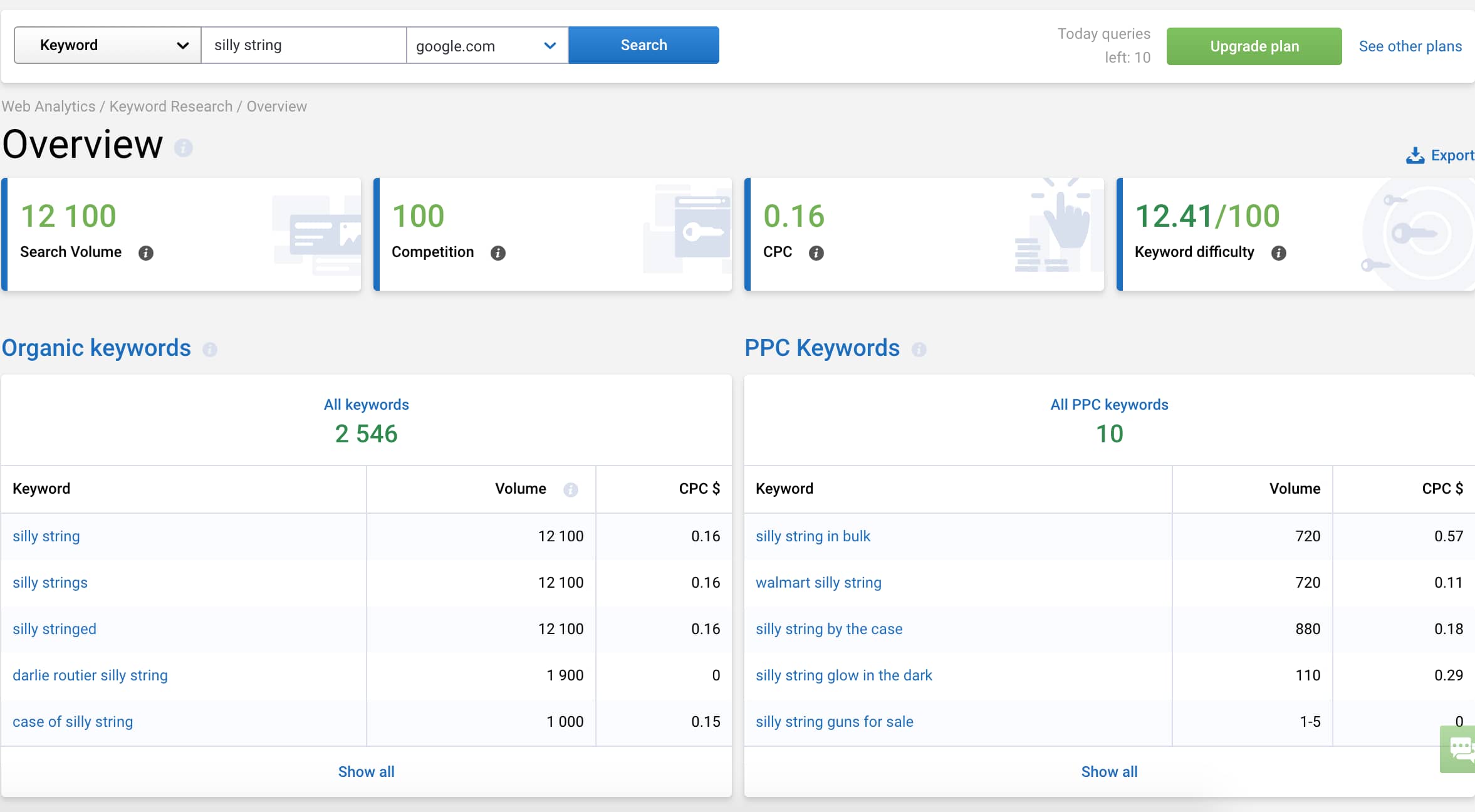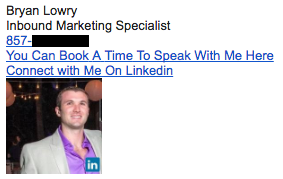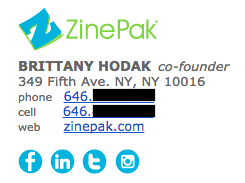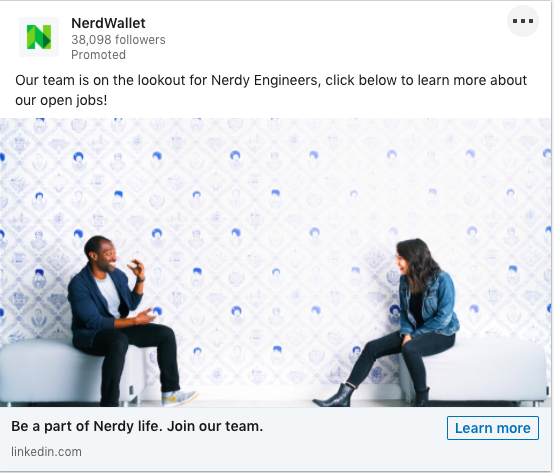When you think about social media marketing, what's the first platform that comes to mind? For many marketers, it's probably Facebook or Instagram. But if I were to pick one, I'd go with LinkedIn.
Why? Well, first, LinkedIn is an amazing platform to use for brand awareness. Their Business Solutions offer a variety of ad types, like photo or video. Ads are visible to the platform's 630 million users, and the unique optimization tools, like audience targeting, ensure Ads reach qualified leads.
Second, LinkedIn's Business Solutions are expansive. There's a lot of opportunity for ad customization and budgeting — which is helpful if you’re not quite sure which ad is right for your strategy.
That's where my third reason for loving LinkedIn comes in: case studies.
Case studies often explain the thinking, process, and analysis behind how a team or business uses a product or solution. Marketing case studies usually focus on specific verticals, industries, or solutions.
Want to learn more about LinkedIn Ads? Their case studies are a good place to start. Let’s walk through a few.
LinkedIn Ads Case Studies
These case studies will dive into every ad type LinkedIn has to offer and what those corresponding campaigns look like. LinkedIn offers four ad types: Dynamic, Sponsored, Text, and Message.
Dynamic Ads change based on the interests of LinkedIn members. They come in four formats and offer the most opportunity for personalization. Use this ad type, if you want to create highly stylized Ads for your campaign.
While Dynamic Ads can be shown in a variety of places on LinkedIn, Sponsored Ads are shown only in the main feed. They're similar to other channels in which ads blend into a user's main screen.
Text and Message Ads live on users’ main screens too — just in less obvious places. A Text Ad shows up in a member's right column, where other promoted content lives, while Message Ads are sent directly to inboxes.
Let’s look at a few companies that are at all levels of LinkedIn advertising expertise as well as companies with a variety of budgets.
Are you ready to see them in action?
LinkedIn Dynamic Ads Case Studies
Dynamic Ads use data about LinkedIn member interests to show them personalized Ads. The content of the ad, like copy or photos, changes based on that data. LinkedIn members can configure what's collected by LinkedIn to personalize the Dynamic Ad experience from the main feed.
LinkedIn's Dynamic Ads come in four formats:
It's likely that you've come across one of these ads on LinkedIn before. With so many versions, it's almost impossible not to see a job ad to your right, or a spotlight ad in the middle of the homepage.
If you've always wondered if those ads were successful, here are a few examples.
1. NerdWallet's Follower Ads
Finding top technology talent isn't an easy task — with so many qualified applicants, and even more competition, Companies like NerdWallet, which gives customers personalized financial advice, need help finding prospects.
In 2019, NerdWallet used LinkedIn Pages as a recruiting tool. LinkedIn's emphasis on professional content makes Pages the perfect place for them to promote its company culture.
Follower Ads about the company's self-proclaimed "nerdy" company culture would bring interested LinkedIn members to their Careers Page, where jobs are posted.
Image Source
“We're building recognition of our company and talent brand among industry peers. Through LinkedIn, we've even been able to reach VP-level members. That's not easy to do anywhere else," says Vivian Chen of NerdWallet's Brand Marketing team.
Results: NerdWallet's most popular posts usually center around company culture. One of NerdWallet's communication managers notes that employee-centric posts provide a genuine depiction of working there. Visible representatives can recruit those who can see themselves joining a team like NerdWallet's.
Takeaways: LinkedIn allows marketers to use the platform differently from other social media channels. If none of your other social pages allow for work-related content. Consider using Company Pages to spotlight company culture, and Promote them using Follower Ads just like NerdWallet did. These Dynamic Ads will change based on audience interest, so your transparent, company-related content will reach potential talent and followers.
2. ESCP Europe's Spotlight Ads
The World's First Business School, ESCP Europe, wanted to generate applicants for their Masters Degree in European Business in addition to building a global leads pipeline. They used Spotlight Ads, like the one below, to engage prospective students:
Image Source
Spotlight Ads offer valuable content with which to target audiences. This ad, giving scholarship information, is perfect for gaining leads from a landing page. ESCP used LinkedIn Spotlight Ads because they’re a great platform for reaching higher education students.
"Precise profile targeting has led to quality results, which have converted in record time," says Rachel Maguer, the Director of Marketing and business Development at ESCP Europe. The company wanted to see a conversation rate of one completed application per 100 leads, in addition to generating at least 250 high-quality leads for their degree program.
Results: So, did ESCP make the grade? As a result of this campaign, ESCP Europe saw over two million impressions from potential students. Additionally, the ads led to a conversion rate of almost 14% — almost twice as much as the intended goal.
In total, ESCP generated 40 more leads over goal and found three countries that topped their qualified leads, solidifying the plan for a global lead pipeline.
Takeaways: Staying customer-focused with ads helped ESCP Europe secure almost 300 applicants. Ads showed images of current students enjoying the beautiful campus. Spotlight Ads accrued the leads, and ESCP Europe nurtured them through to conversion with follow-up calls and interview next steps.
Use Spotlight Ads to identify quality leads in global markets, and nurture them by providing valuable content to audiences in a Dynamic Ad format.
3. Snagajob's Job Ads
Snagajob, formerly known as Snag, is a source for finding hourly work. Because the platform is for job discovery, it's not hard to guess that when opportunities open, Snagajob's team wants people to know. To help, the company turned to LinkedIn for lead generation and ads to capture the attention of their target audience.
The company's ideal customers — business owners and managers — are on LinkedIn. The Job and Video Ads showcased Snagajob's deep understanding of customer behavior: that decision makers often don't have enough time. As a result, ads are short, explain the service's value, and are visually stunning:
Results: Snagajob's marketers had a hunch that Job and Video Ads would be successful for compelling busy professionals, and they were correct. Their campaign saw an 84% rise in converted leads. They earned more applicants and gained quality leads, all while lowering their cost of ad spend.
Takeaways: When targeted Ads are used in a calculated way, like Snagajob's, they're not a waste in ad spend. Additionally, Job Ads let people outside of a member's network know that companies in their industry are hiring.
4. Noodle's Content Ads
Noodle.ai provides artificial intelligence services to businesses, helping them become more efficient. To build brand awareness, Noodle.ai's marketers decided to use Content Ads to connect with their target audience of C-level executives.
In 2018, Noodle used LinkedIn's ad tools to solidify a lead pipeline. Content Ads, which promote downloadable content that automatically generate leads, were an excellent method to reach supply chain executives.
Image Source
The Content Ad above promotes an ebook about supply chain management. Noodle.ai's team found that their target audience responds to content that helps executives understand their expertise.
Results: Noodle.ai saw three times better ROI than other marketing methods. In addition, CTR soared to up to three times higher on Noodle.ai's paid content and obtained 40% of qualified leads from the channel overall.
Takeaways: LinkedIn has now become a prime tool for identifying Noodle.ai's leads. By using Content Ads, Noodle.ai's marketing strategy is now a refined, reliable process for team cohesion.
Use Content Ads as a scalable marketing choice — as Noodle.ai grows, their marketing efforts with LinkedIn can grow as well. Remember, Content Ads are only available by contacting a LinkedIn representative.
LinkedIn Sponsored Ads Case Studies
Sponsored Ads appear in the news feed of LinkedIn members. They blend into feeds, but are notated by a supporting headline. Sponsored content includes single image ads, video ads, and carousel ads. Let's look at examples of each.
5. Kate Spade New York's Single Image Ads
Before 2019, designer brand Kate Spade New York (KSNY) never had ad campaigns on LinkedIn.
It wasn't until the company's team identified customers for their smartwatch on the platform that LinkedIn was considered for advertising. Krista Neuhas, senior director of global digital marketing for KSNY, says, "It’s important to us that the message we are sharing with consumers fits on the platform we are using."
Initially, the goal of the campaign was to drive traffic. The team decided to run a single image ad that featured actress Busy Philipps wearing the watch. The supporting copy tells the busy working woman that the new watch does everything they need:
Image Source
The single image ad was used to spread brand awareness and showcase the new launch. It was part of a strategy that aimed to reach the right type of professional with the right messaging, and a simple image did the trick. Let's see how the ad campaign went for KSNY.
Results: The Busy Philipps ad made impressions with 143,000 audience members. It also earned a 2.44% engagement rate and 1.78% CTR. Total engagement numbers reached 5,000. Kate Spade New York hit a home run with their smartwatch ad — In fact, out of four platforms used for the campaign, LinkedIn members produced the highest CTR.
Takeaways: B2C content has a place on LinkedIn. Most audiences are part of the professional landscape in some way, so engaging them on LinkedIn can be useful. Start with a single brand awareness ad, like KSNY, to gauge engagement.
Ultimately though, remember that if framing marketing in the right context, like the smartwatch and its copy, the right customers can be reached.
6. Corporate Visions' Carousel Ads
If you've seen Carousel Ads on other platforms, they're similar on LinkedIn. These Ads allow for multiple images to appear in the same post. Carousel Ads are great for lead generation because target customers see multiple iterations of offerings which helps to pique their interest.
B2B training company Corporate Visions had a large audience on LinkedIn. Their ideal customer is a decision-maker in customer service, sales, or marketing. Even so, the leads they were earning weren’t qualified, and they quickly identified they had a content problem.
To make content their audience would enjoy, Corporate Visions' marketing team used LinkedIn's targeting tools to research their target market's demographics. They identified previous ads that performed well and produced the most high-quality leads: carousels.
With this information, the team moved forward with a carousel campaign. Carousel Ads from Corporate Visions give quick, actionable tips to their audience about the B2B industry, like this one below.
Image Source
This campaign was optimized with LinkedIn's Conversion Tracker. This function tracks audience behavior and allows small changes to be made. Advertisers on LinkedIn can target members based on job title, seniority, and company size, so Corporate Visions was able to get very specific with who was seeing their ad.
Results: Corporate Visions saw a doubled increase in ROI after optimizing their Ads and reaching the right customers. The company has also seen a 116% increase in qualified leads year-over-year, making the new carousel strategy a success.
Takeaways: Companies could be leveraging LinkedIn Ads but not optimizing them or tracking conversions. When Corporate Visions learned about customer behavior on LinkedIn, they were able to identify how to earn the most leads with the platform. Look at campaign performance and study the reactions of your audience — is there a way to better reach them?
7. Automation Anywhere's Video Ads
Automation Anywhere builds software bots that do repetitive tasks so humans can spend time in other places. When the time came to advertise the biggest launch in the history of their company, Automation Anywhere sought to use LinkedIn's live broadcasting feature to announce their product.
The goal for the campaign was to build the most awareness possible. Automation Anywhere's Company Page had over 100,000 followers and an active community, so they posted a teaser to test video ROI. Two minutes later, the video had over 300 comments. Their marketers knew they'd made a great choice.
Image Source
Automation Anywhere's official LinkedIn Live broadcast included repurposed content, drawing clips from previous videos to attract leads. But how did the broadcast perform?
Results: When the broadcast went live, the response was almost immediate. Within a few minutes, they had 400 comments from interested viewers. At the end of the broadcast, there were one thousand.
Though the product launch announcement ran across multiple platforms, 78% of viewers came from LinkedIn Live.
The team at Automation Anywhere engaged with their community and had meaningful conversations about the product. Having a team of product marketers talk to followers was big for building customer relationships and providing valuable messaging.
Takeaways: Consider hosting a broadcast similar to Automation Anywhere’s. Maybe there's no launch coming up, but consider producing a live Q&A or webinar. Automation Anywhere's team was blown away by the response from their community with a video; Maybe yours will be just as active.
LinkedIn Text and Message Ads
LinkedIn Text Ads show up in the right module of the main feed and give members a bolded CTA as a headline and a supporting sentence. They're easy to create, pick a target audience, and track leads.
Message Ads are a bit different — they're sent to a LinkedIn member's inbox. This gives advertisers the ability to communicate directly with leads, without a character limit. There are also tools to beef up a message's impact, like adding a form into the message.
Instead of a busy email inbox, LinkedIn Messages are less cluttered, leaving messages more room to be seen. And with the Conversion Tracker, keep track of who's engaging with and converting from your Ads.
8. Design Pickle's Text Ads
Let's see how graphic design company, Design Pickle, earned over $1 million in revenue with Text Ads. The company is a subscription service, but instead of food or makeup, customers are set up with professional graphic designers.
As part of a small business that aimed to increase plan subscriptions, Design Pickle's marketers had to keep their strategy cost-effective. The team decided to use Message Ads to retarget website visitors.
Image Source
LinkedIn's tools identified a target audience closely matching the company's persona, so the marketers were able to personalize ads for a specific, ideal market.
The emphasis on targeting proved to be effective. Message Ads addressed company stakeholders making buying decisions. Copy like, "Save $37,000 On Design" is eye-catching and grabs a user's attention.
So, did the low-key ads bring high-yield results for Design Pickle?
Results: This campaign led to 463 new signups, 64 of them for premium subscription plans, leading to an estimated $1.8 million in revenue. As for cost effectiveness, LinkedIn provided the lowest average cost per signup by 19% when looking at the campaign across platforms.
Takeaways: Sometimes, it doesn't take a big, flashy ad to make an impact. Design Pickle is a graphic design company and earned over a million dollars with two-sentence ads. When audience targeting and retargeting happens on LinkedIn, companies can reach a large audience and re-engage leads.
9. VistaVu Solutions' Message Ads
VistaVu Solutions is a B2B company that was struggling with brand awareness. We've seen how LinkedIn's unique audience targeting tools impacts visibility for companies, so let's see if that rings true for this company.
In addition to boosting brand awareness, VistaVu's marketers aimed to generate leads and increase brand credibility with compelling Ads. VistaVu's team chose LinkedIn because their niche audience — oilfield industry leaders — was active on the platform.
To make their brand stand out from the competition, VistaVu's marketing managers decided to use Message Ads to amplify their unique company and its value. To make sure the team was targeting the right audience within the oilfield industry, LinkedIn's tools filtered audiences to make that happen.
The message itself was an ebook offer, and included a CTA with a download link. Because there's no character limit, the body text was able to properly introduce the company, its area of expertise, and the ebook.
Image Source
Results: As a result of the messages campaign, VistaVu earned a 23.8% conversion rate, and cut ad spend by 75%. Using LinkedIn as opposed to other platforms earned the company five times more generated leads and led to twice as many conversions.
Takeaways: LinkedIn as an advertising platform doesn't limit efforts to just main feeds. Building brand awareness by using Message Ads allows for ample text to introduce a company to prospects.
Case studies can be extremely helpful for a real-life example of strategies you've never tried. You can visualize how a campaign looks and the tools to help you get there.
Be sure to pick a case study that's recent and comes with both qualitative and quantitative data. When it comes to ads, numbers and percentages are important, but so are strategy details. Recent studies will give you the most accurate numbers and processes for advertising.
If I want a relevant case study about social media, I start with the website itself. Every social media platform I've used has a section for case studies. For those that don't, I look at other articles, like this one about Facebook case studies.
Now that you know how to pick out a case study, and what a LinkedIn Ad strategy can look like, maybe for your next LinkedIn campaign, you can conduct your own case study. Try it, and see what you learn.

Posted by https://bit.ly/31tHUKW































 For businesses and academic institutions that want to embrace mindfulness, managers and colleges can invest in a
For businesses and academic institutions that want to embrace mindfulness, managers and colleges can invest in a 